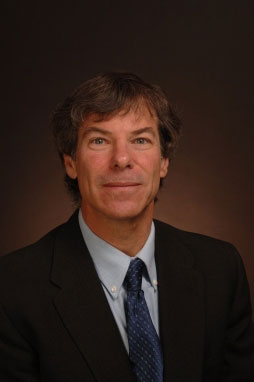| Posted: April 27, 2009 |
Arizona State University boosts materials science and engineering |
|
(Nanowerk News) Nathan Newman, a professor in ASU’s Ira A. Fulton School of Engineering, has been selected as the first to hold the Lamonte H. Lawrence Chair in Solid State Science. The position provides Newman resources to help ASU develop a world-class program in materials science and engineering.
|
|
The chair has been established with support from Lamonte H. Lawrence, an ASU graduate and the founder of Tempe, Ariz.-based Lawrence Semiconductor Research Laboratory, a semiconductor research and development company.
|
 |
| Nathan Newman
|
|
As the Lawrence Chair, Newman, who directs ASU’s LeRoy Eyring Center for Solid State Science, will chair an annual Lawrence Conference on the Science of Epitaxial Materials and direct a Lawrence Visiting Scientist Program to bring experts in the field to the collaborate with ASU faculty.
|
|
Funding provided through an initial investment of $2 million from Lawrence and his wife, Regina, will support not only the faculty chair position and the annual conference, but also be used to encourage epitaxial experts to work with ASU, and to acquire new research equipment for the Eyring Center.
|
|
In addition, the gift provides funding for research fellowships for graduate students and for acquiring scholarly materials for material science and engineering education.
|
|
“Materials science is being applied in many industries, and advances often have life-saving implications,” Lawrence said. “The science, for example, is critical in medical imaging techniques such as PET (positron emission tomography) scans, and the effectiveness of safety devices such as automobile air bags.”
|
|
Other universities, such as MIT, Stanford and the University of Texas, are also focusing on epitaxial technology research, “but there has not been a forum for all the experts from industry and academia to gather to regularly explore each others’ findings and tie their efforts together. We thought ASU and the Phoenix area would be the perfect place for that,” Lawrence said.
|
|
Epitaxy involves crystals, such as diamonds and quartz, that are comprised of atoms located in a regularly ordered arrangement. The symmetry of the atomic pattern is reflected in the shape of the objects.
|
|
Epitaxy is the process of growing a perfect or near-perfect crystal on top of another material, typically called the substrate, so that the atoms arrange in a way to make an oriented perfect or near-perfect crystalline layer. This ability to stack such materials, including stacking of semiconductors, enables the building of electronic and optical devices such as microchips and semiconductor lasers.
|
|
Epitaxial layers find extensive use in optical and electronic devices. The compositions of these layers can be tailored to provide the building blocks for numerous applications, including computer memory and logic, detectors for space telescopes, optical communications, power control devices, accelerometers, inertial navigation instruments, nanoscale pressure and flow controllers and many others.
|
|
Lawrence founded Lawrence Semiconductor Research Laboratory in 1992. Prior to that, he founded Lawrence Semiconductor Laboratories in 1988 and was president and chief executive until its acquisition in 1997 by Advanced Technologies Materials Inc.
|
|
|
|
He worked with Motorola for more than 18 years, and is a former director of ATMI, Bell Atlantic and CCB Financial Corp. He spent several years with Epitaxy Inc. and was director of the Epitaxial Technology Laboratory of Applied Materials.
|
|
Newman, who also is the associate director of research for the School of Materials, has focused his research on epitaxial growth, characterization and modeling of novel solid-state materials for microwave, photonic, and high-speed applications.
|
|
His research has brought important contributions in areas that impact high-technology devices, including cell phone base station filters, blue light emitting diodes, military microwave communication systems and high field magnets.
|
|
He holds 10 U.S. patents and is on the board of directors of the U.S. Committee for Superconductor Electronics.
|
|
“Nate is highly deserving of the appointment to the Lawrence Chair,” said Subhash Mahajan, director of the School of Materials, who recruited Newman from Northwestern University for his research expertise in epitaxial science. “I’m pleased he will be focusing on our efforts to build on our leadership in this area.”
|
|
He is a recipient of the Van Duzer Award, an honor bestowed by the Institute of Electrical and Electronics Engineers (IEEE) to recognize significant research articles. He has published more than 150 research papers, and his writings have been cited in articles by other scientists and engineers more than 4,000 times.
|
|
Newman is editor of the journal IEEE Transactions of Applied Superconductivity and a Fellow of the American Physical Society.
|
|
He earned M.S. and Ph.D. degrees from Stanford University in 1983 and 1987, respectively, and a B.S. degree in biomedical/electrical engineering from the University of Southern California in 1981.
|
|
He has been a member of the technical staff at the University of California at Berkeley, Lawrence Berkeley Laboratory, Stanford University and Conductus Inc., and an associate professor at Northwestern University.
|
|
ASU’s School of Materials is jointly administered by the Ira A. Fulton School of Engineering and the College of Liberal Arts and Sciences at ASU.
|

